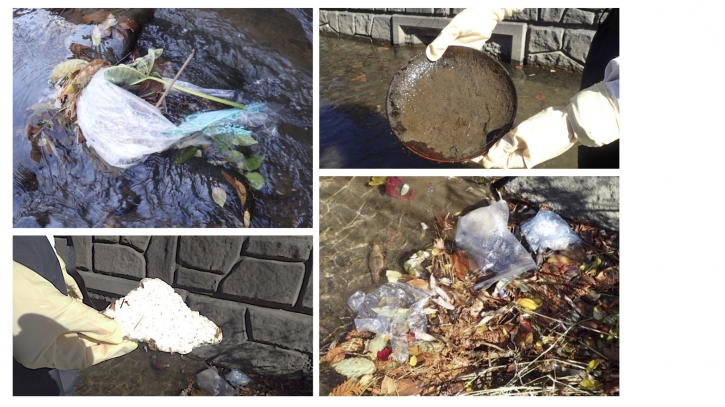Pollution by mismanaged plastic waste is a global concern which affects society, economy, and natural ecosystems. Focusing on freshwaters, hundreds of articles describe the contamination of water, sediment, and organism (especially fish) by small-size plastics, called microplastics. The results describe the widespread diffusion of microplastics in freshwater ecosystems and high exposure levels of organisms to this anthropogenic contaminant. Conversely, limited information is available on the contamination of freshwaters by large-sized plastics, called macroplastics (Figure 1). Even though it is known that macroplastics can threaten the life of several marine animal species, the effects on freshwater species are poorly documented. However, research efforts are growing and in fact, information on macroplastics in rivers has increased during recent years. Macroplastics in lakes are not as studied as in rivers, so several critical information is missing, such as the intensity of the contamination, the sources, the factors affecting the distribution of macroplastics, and their effects or interactions with freshwater organisms, from microbes to vertebrates. Therefore, what is the threat that macroplastics pose to lacustrine ecosystems?

Figure 1. Examples of macroplastics contaminating fresh waters.
Researchers at Nagano University’s Institute of Freshwater Biology, in collaboration with the University of Roma Tre (Italy), hav reviewed the globally available scientific information on the distribution and impacts of macroplastics in freshwater lakes to provide a better understanding of what is known until now and suggest future directions of research activity. This research was recently published in the international journal, Water (https://doi.org/10.3390/w15010060).
The results show that the interest in the impacts of macroplastics in lakes is recent as it started in 2012, while macroplastics in oceans were studied since about 1980. During the past 10 years, twenty-one lakes have been studied in the five continents around the world and macroplastics were detected in all of them. Not only lakes of anthropogenic origin are contaminated but also natural one, such as glacial, floodplain, tectonic. In particular, macroplastics were surveyed from shoreline sediment, lakebed sediment, and fish guts. Of relevance is that the single-use plastics, for example plastic bottles, shoppers, packaging material, are identified as the most abundant macroplastics in lakes, suggesting focusing the public awareness on this specific category of plastic waste.
In conclusion, research on the threats of macroplastics to lacustrine ecosystems is at early stages so a complete picture is not available yet. However, it is evident that the macroplastics are widely polluting lakes and could pose a threat to lacustrine ecosystems. Researchers from Nagano University’s Institute of Freshwater Biology will contribute to address the issues of anthropogenic pollutants to preserve the biodiversity of freshwater ecosystems.
The results show that the interest in the impacts of macroplastics in lakes is recent as it started in 2012, while macroplastics in oceans were studied since about 1980. During the past 10 years, twenty-one lakes have been studied in the five continents around the world and macroplastics were detected in all of them. Not only lakes of anthropogenic origin are contaminated but also natural one, such as glacial, floodplain, tectonic. In particular, macroplastics were surveyed from shoreline sediment, lakebed sediment, and fish guts. Of relevance is that the single-use plastics, for example plastic bottles, shoppers, packaging material, are identified as the most abundant macroplastics in lakes, suggesting focusing the public awareness on this specific category of plastic waste.
In conclusion, research on the threats of macroplastics to lacustrine ecosystems is at early stages so a complete picture is not available yet. However, it is evident that the macroplastics are widely polluting lakes and could pose a threat to lacustrine ecosystems. Researchers from Nagano University’s Institute of Freshwater Biology will contribute to address the issues of anthropogenic pollutants to preserve the biodiversity of freshwater ecosystems.






